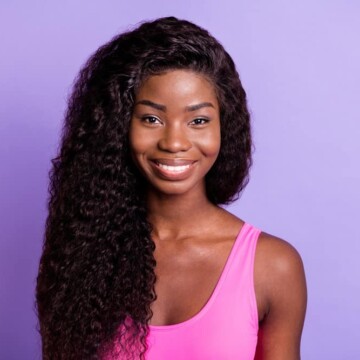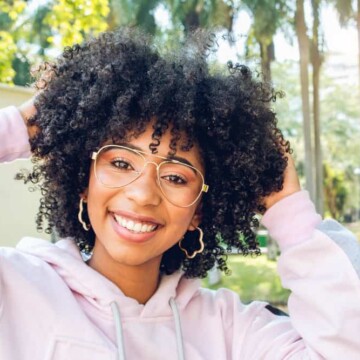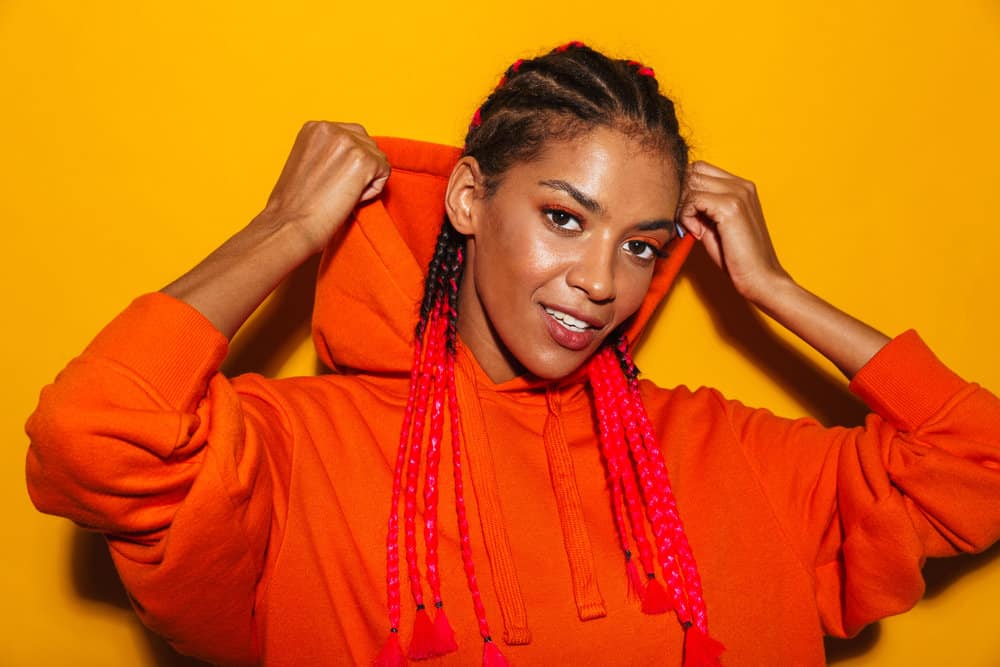
In the world of braids, there are tons of terms thrown around, many of which are downright confusing. Two commonly compared braiding terms that newbies frequently need clarification on are “cornrow” and “Dutch braid.”
If you want to know more about each of these terms and what makes them different, this is the article for you! In it, we’ll put both terms under a microscope and leave no stone unturned. Let’s get right into it our analysis of Dutch braids vs. cornrows!
Table of Contents
What Is a Cornrow?
A cornrow is a type of braid where the hair is plaited flat to the scalp. Cornrows start with three strands, and with each stitch of the braid, you pick up more hair and then braid to the ends. This braid type is incredibly popular among Black people, especially though it’s worn by people of other ethnicities.
Cornrows take a healthy amount of precision and sometimes several hours to complete. Not everyone can execute cornrow styles well.
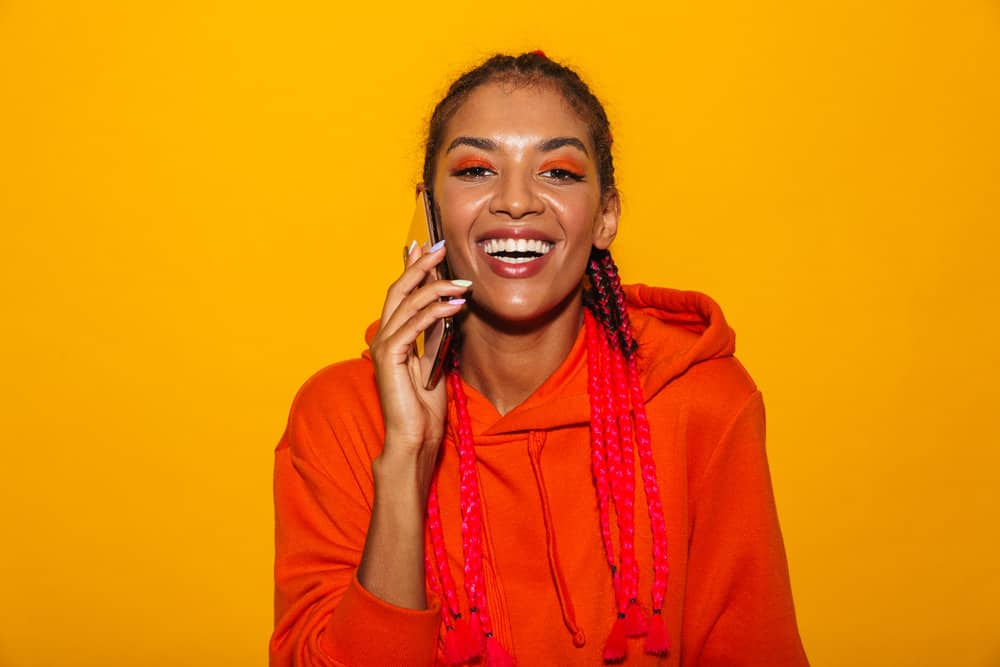
Some of the most common styles you’ll see that feature cornrows include:
- Lemonade braids
- Two-Layer Cornrows
- Three-Layer Cornrows
- Side Cornrows
- Tribal braids
Cornrows are always well-manicured and sleek, and the parts between the braids add to each style's unique aesthetic.

Where Did Cornrows Originate?
The debate surrounding the origination of cornrows is ongoing, as some state that cornrows didn’t come from just one geographical location or group of people. However, the general consensus is that cornrows originated in Africa around 3,000 B.C.
What Is a Dutch Braid?
A dutch braid is a three-strand plait that lies flat against the scalp, like a cornrow. Also, similar to cornrows, dutch braids start with three sections of hair and are woven together while picking up more hair.
They are then braided down to the ends. Dutch braids are often large and rarely done in large numbers. So, they tend to be quick and easy to do.
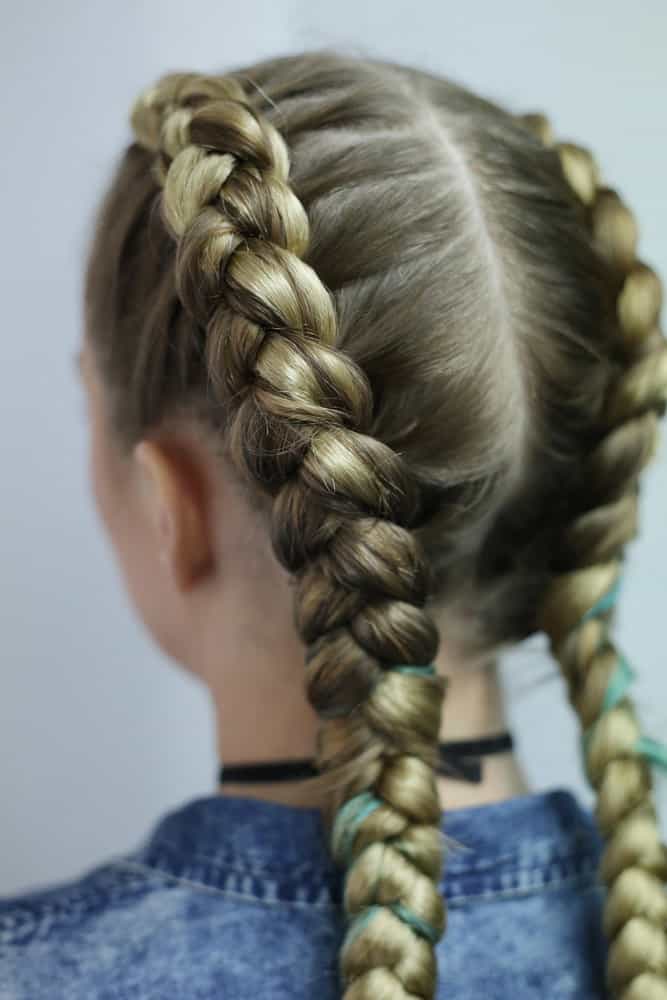
Here are a few Dutch braid styles:
- Two Dutch Braids
- Dutch Braid Bun
- Dutch Braid Low Pony
- Dutch Braid Double Bun
Dutch braids may be either relaxed and airy or sleek and sophisticated, depending on the look you’re going for.
Where Did Dutch Braids Originate?
Like cornrows, dutch braids also originated in Africa thousands of years ago. More and more people wonder whether these braids originated in the Netherlands instead, but there is no widely-accepted evidence to prove that.
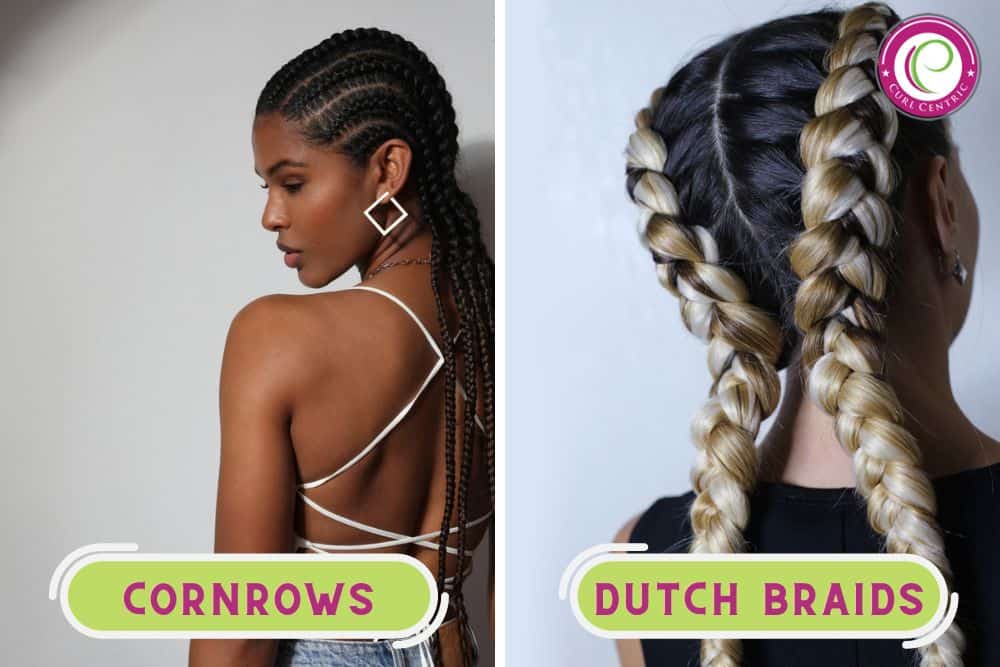
Dutch Braids vs. Cornrows: What’s the Difference?
Now that you’ve gathered some basic information about both cornrows and Dutch braids, it’s time to highlight the differences that exist between the two. We’ll do that in the following list:
- Effort required. In general, cornrows take a lot more effort to create than Dutch braids. It’s because cornrows are done on a much smaller scale than Dutch braids.
- Types of styles created. Dutch braids are usually used to create more formal hairstyles; in most cases - updos are especially common. Though cornrows can be used to create formal hairdos, they are often not as elegant as Dutch braid hairstyles.
- The braiding technique. At first glance, you might think that the braiding technique for cornrows and Dutch braids are identical. But that’s not the case. To add hair when doing a Dutch braid, you grab subsections of hair from each side of the section. With cornrow braids, you grab subsections of hair from under the middle hair section.
- The cost. Because it takes more time and effort to do cornrows, if you go to get yours done professionally, you could pay hundreds of dollars for your style. You’ll likely pay much less for Dutch braids since they can be done in minutes instead of hours and are much easier to do than cornrows.
- Extension possibilities - Though you can add extension hair to both Dutch braids and cornrows, you’re more likely to see extensions added to cornrows.
- Longevity - Because cornrows are braided in a manner that ensures they are compact and frizz-free, they tend to last much longer than Dutch braids. Dutch braids can last as little as a day, while cornrows may last for weeks or even months.
Pros and Cons of Cornrows
Thinking about giving cornrows a try? Don’t do so until you’ve taken a good look at the pros and cons associated with them. Below, we’ll get into the pros and cons of cornrows:

Pros
- When done well, cornrows can last for many weeks.
- Cornrows group your strands together, shielding the majority of your hair from external influences like UV rays, cold temperatures, and even manipulation from repeated styling.
- Cornrows are incredibly low maintenance. The most you need to do while wearing a cornrow style is cover your hair up at night with a silk or satin scarf or bonnet and oil your scalp from time to time.
Cons
- Cornrows are often done way too tight. And when that’s the case, you could experience headaches, scalp irritation, and hair loss.
- Cornrows can be costly depending on who does them, how small you want them to be, and whether you want intricate parting.
Pros and Cons of Dutch Braids
Dutch braids often look angelic and hands-down beautiful. But they are by no means perfect. Keep reading to learn about the pros and cons of Dutch braids:
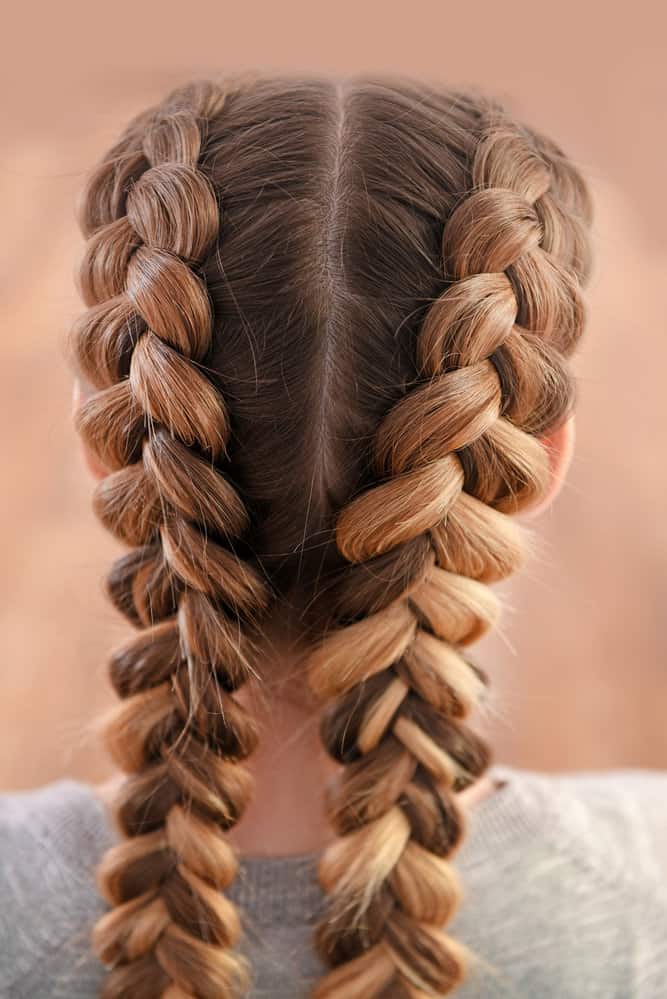
Pros
- Dutch braids show less of your scalp than other braid types, giving you the illusion of more natural volume and thickness.
- Dutch braids don’t take more than a few minutes to complete.
- You can fluff up Dutch braids to make them puffier and purposely disheveled.
- They work well for formal occasions, like weddings and graduations.
- They don’t cost very much at the salon.
- They tend to be easy on your edges and don’t cause hair loss.
Cons
- Dutch braids don’t last longer than a few days at best. It doesn’t take long for them to start looking frizzy and unkempt.
Which Braid Type Should You Get?
The type of braid you should get ultimately depends on the look you’re going for. If you want a simple style with just a couple of braids going toward the back, you might choose Dutch braids over cornrows. In contrast, if you want a bunch of hanging braids that will last for a month, cornrows will be the best overall choice.
If you’re ever not sure which braid type you should use for a style, you have options. Your first step should be to find a tutorial for the style you want to try.
Most styles have a tutorial on YouTube that’ll show you how to create the look at home. In cases where there’s no tutorial online, or you don’t feel confident enough to choose a braid type, you can always call a local hair stylist for advice.
Are Cornrows the Same as Cane Rows?
Some people refer to cornrows as cane rows. When you hear the term “cane rows”, you can assume that they are talking about cornrows - they are the same. You might also be right if you guessed that the person using the term is from the Caribbean.
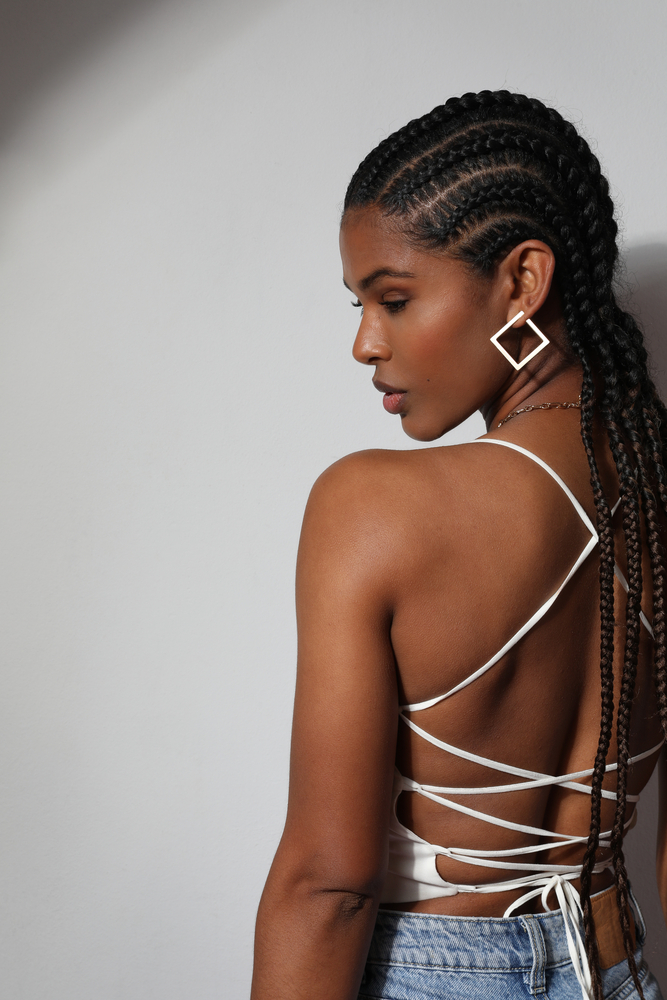
Are Bo Braids Also Cornrows?
Bo braids, which were popularized by actress, Bo Derek, are indeed cornrows. So, whenever someone mentions Bo braids, know that they are referring to cornrows. The braids were only called Bo Braids after Bo Derek wore the style in a movie called “10” in the 1970s. Kim Kardashian also wore the style recently, and some thought that she invented it - of course, that couldn’t be more untrue.
- Box Braids and Cornrows
- Braid Styles for Black Women
- How Long Should You Keep Cornrows In
- Do Cornrows Hurt?
So, there you have it - a quick yet thorough comparison of Dutch braids and cornrows. We hope that the information in this article was helpful to you!

